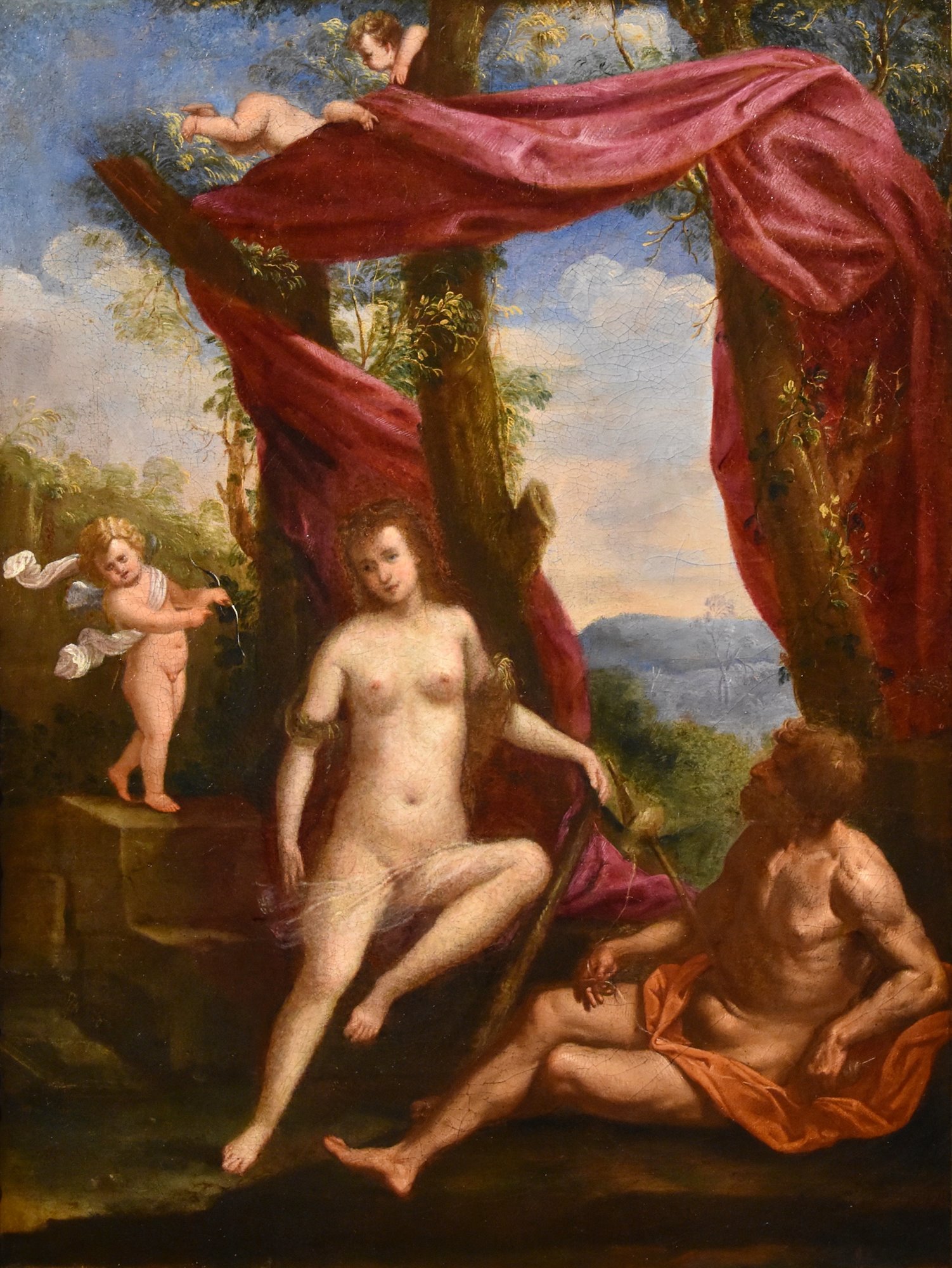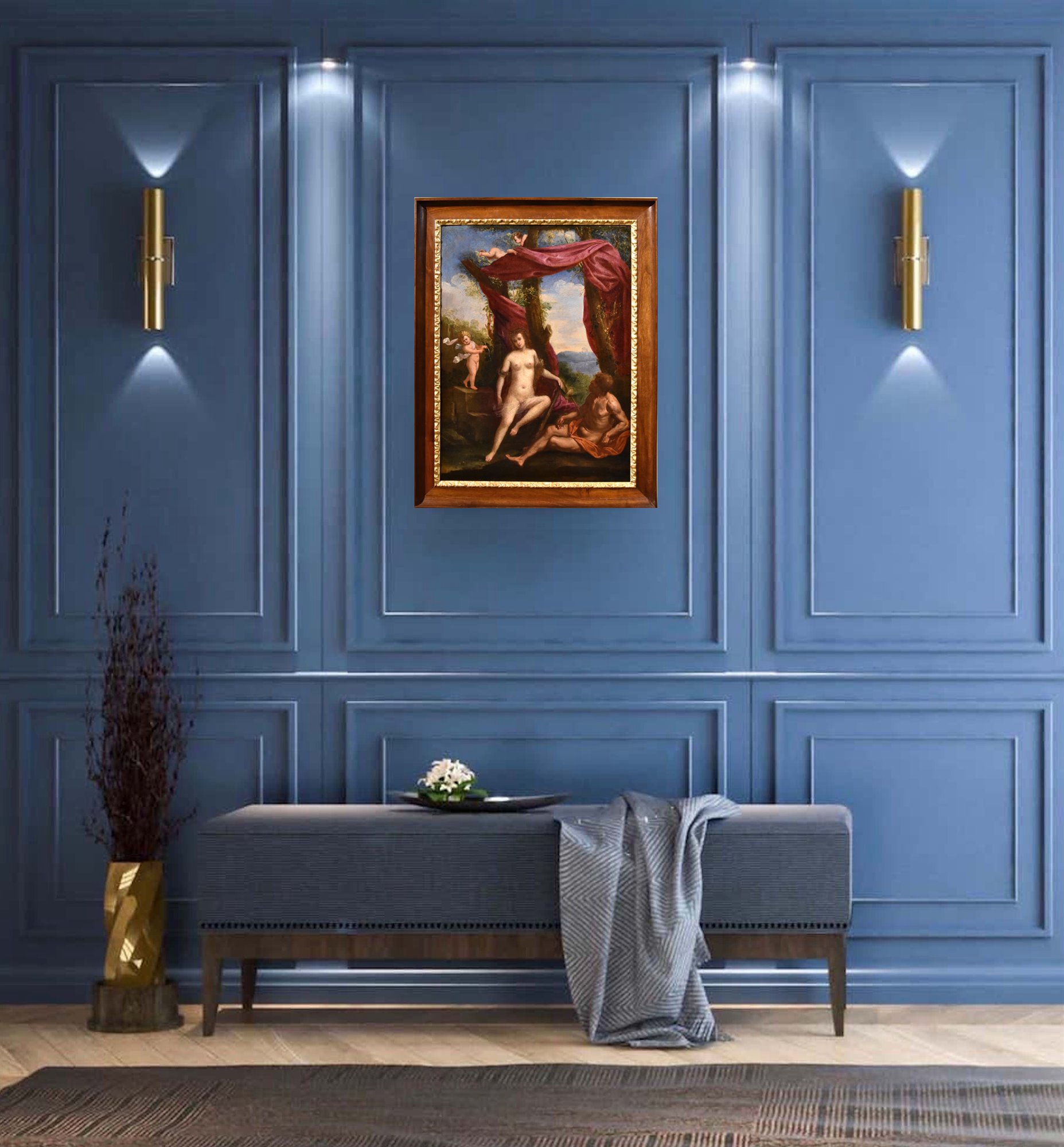Venere, Marte e Cupido
Mattheus Terwesten (L'Aia, 1670 - 1757)
Mattheus Terwesten (The Hague, 1670 - 1757)
workshop
workshop
Venus, Mars and Cupid
Late 17th century
Oil on canvas
66 x 49 cm, framed 77 x 61 cm.
66 x 49 cm, framed 77 x 61 cm.
The figures of Venus and Mars meet in a wooded setting, in the presence of Cupid, who smiles winking at the observer, and of two other curious cupids in the upper part of the canvas.
The goddess is represented as a classical Venus, naked, with only a veil lying to cover her pubis and lying on a rock, while at her side, the vigorous young Mars, also naked and covered only by a red cloth, contemplates some beauty, following their loving encounter.
The two figures, which appear almost antithetical thanks to the classical beauty and grace of one and to the muscular tension and statutory vigor of the other, could probably have an allegorical meaning, of marriage or of Love in general, personified by Venus taming the Force, of which Mars is the personification: the woman appears as a force that gives balance to the impetuousness.
The in-depth analysis of the valuable canvas, which is predominantly influenced by the other Italian, leads us to connect it with the painter Mattheus Terwesten (The Hague 1670 - 1757), of Flemish origins but who was able to develop the salient features of his painting thanks to his trip to Italy, especially to Rome (from 1675 to 1677) and to Venice, where he studied the works of Titian and Tintoretto, and finally to Florence;
Our composition is in fact certainly indebted to Roman painting, thanks to Albani's mythological compositions, and Venetian, both for the treated theme (both Titian and Paolo Veronese have depicted, both repeatedly, the story of Venus), and for the style, with the chromatic range of the landscape, rendered by the colouristic iridescence of the vegetation and the sky, and the inevitable drape that, crossing between the cool of the trees, frames the scene.
In 1678 he returned to The Hague via France and England. In 1690 he became court painter of the Elector of Brandenburg, later King of Prussia, who appointed him director of the Prussian Academy of Arts in Berlin, with a production that essentially counts historical and allegorical themes, often inspired by the works of Ovid, dedicating himself a lot to fresco decoration.
The painting is in good condition, with a beautiful gilded wooden frame.
We take care and organize the transport of the purchased works, both for Italy and abroad, through professional and insured carriers.
For any kind of information, you are welcome to contact us.
Follow us also on:




